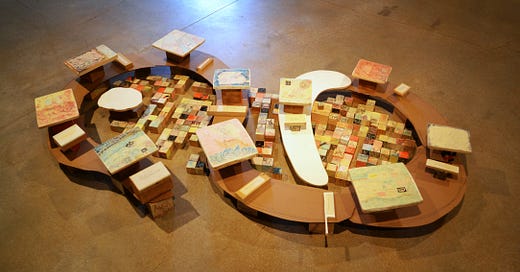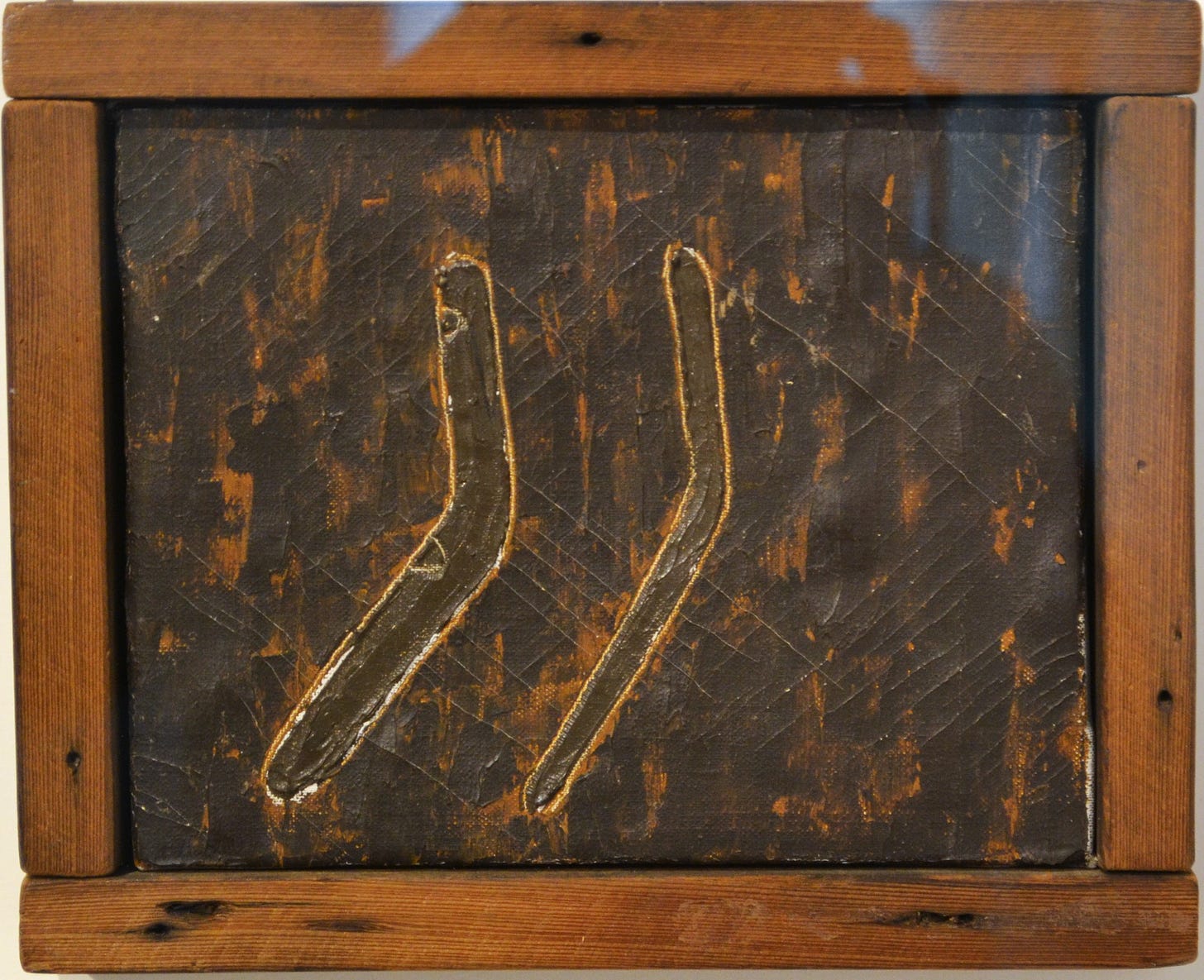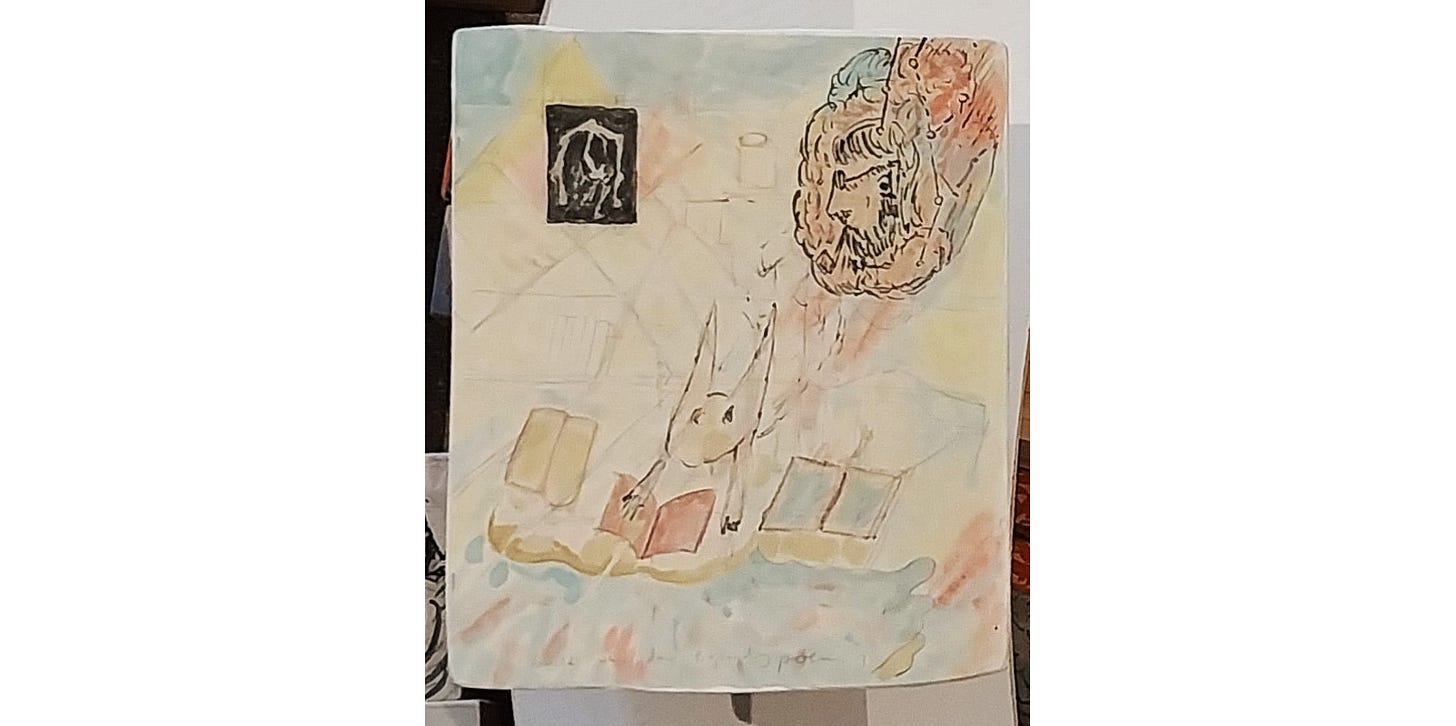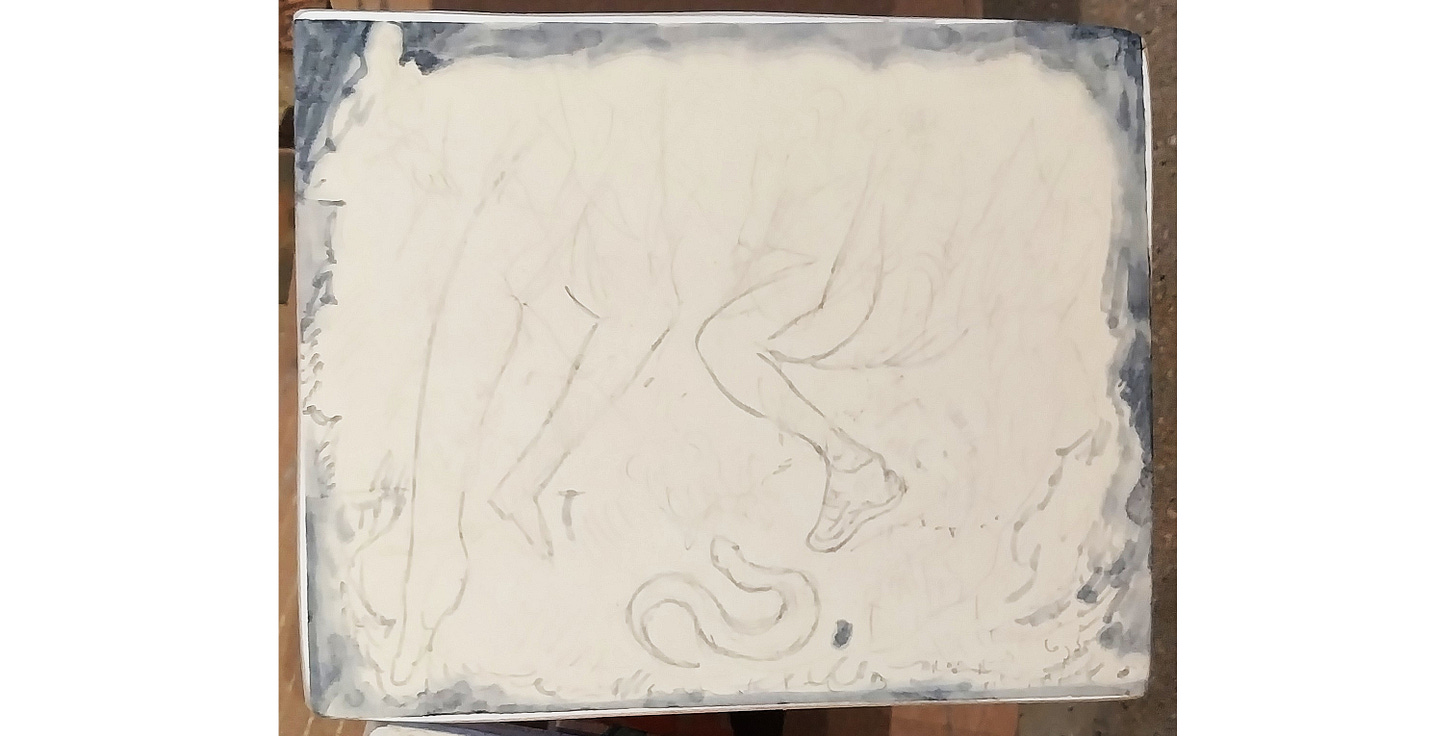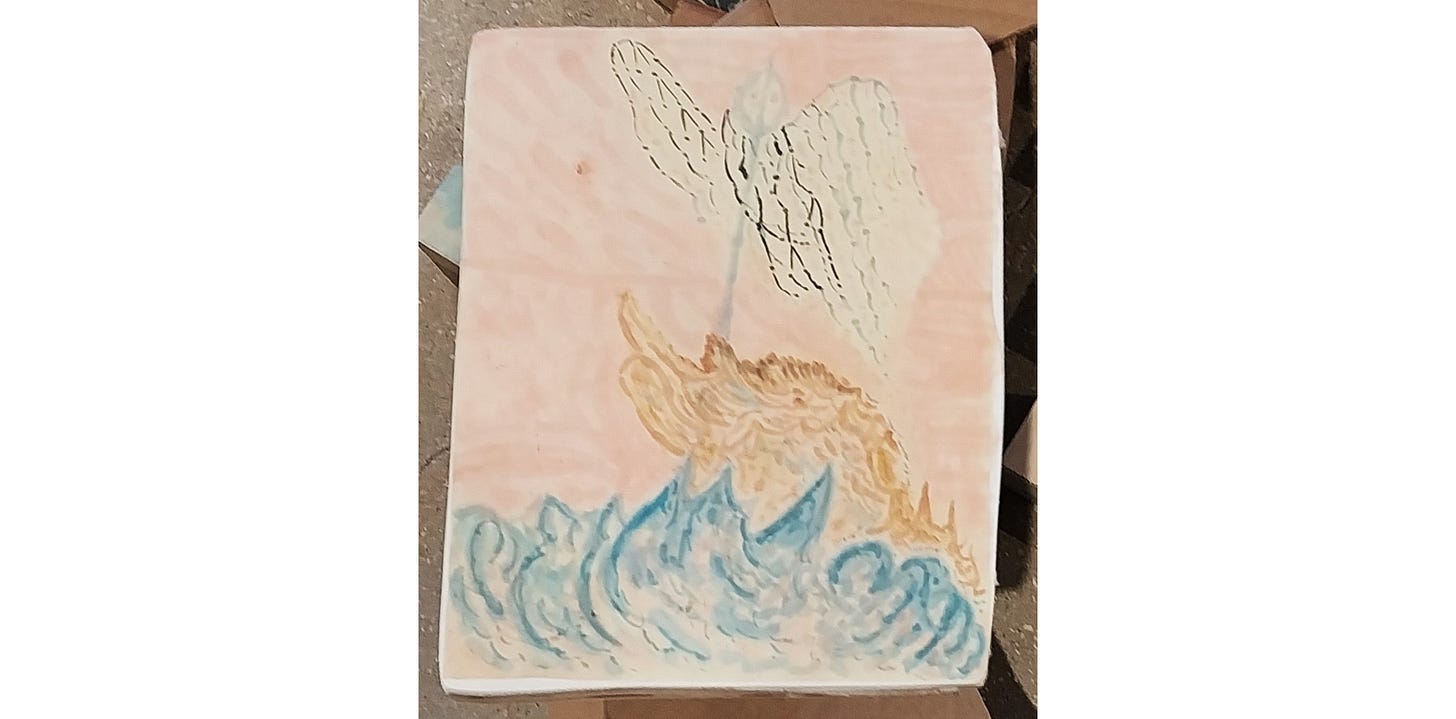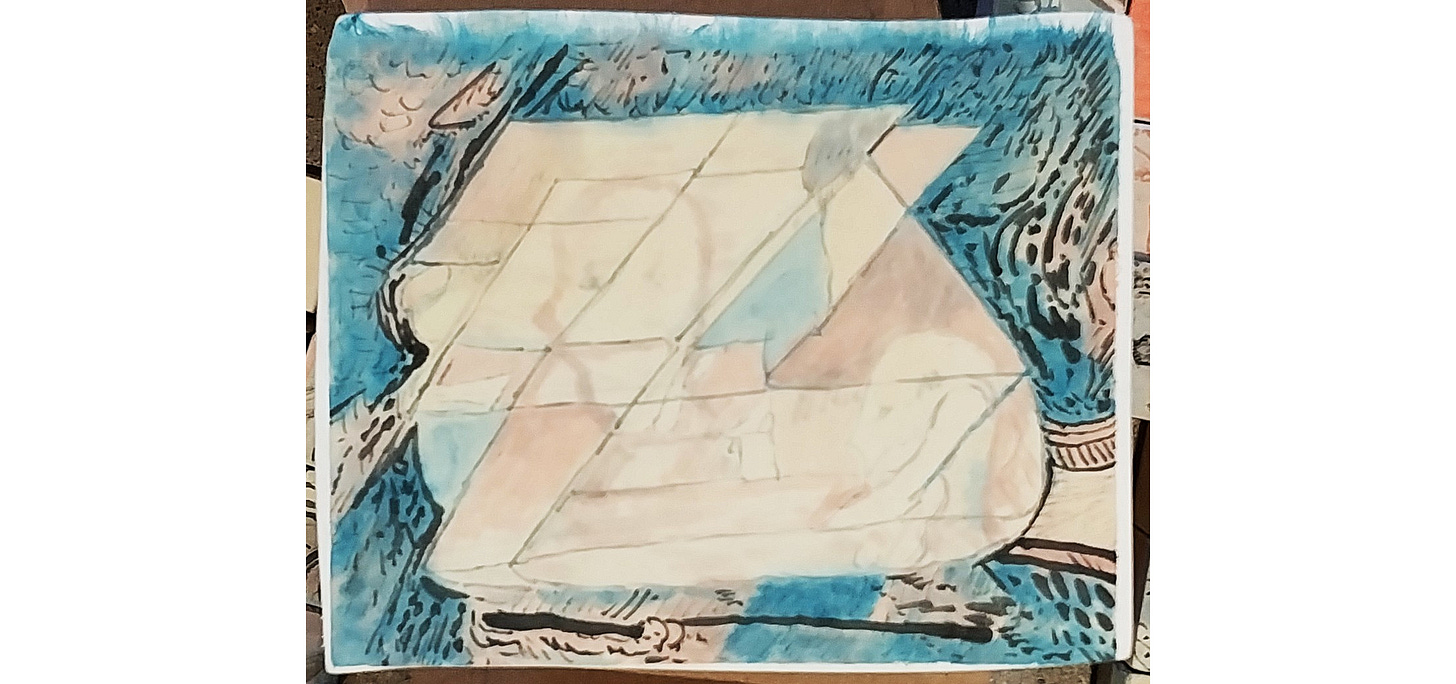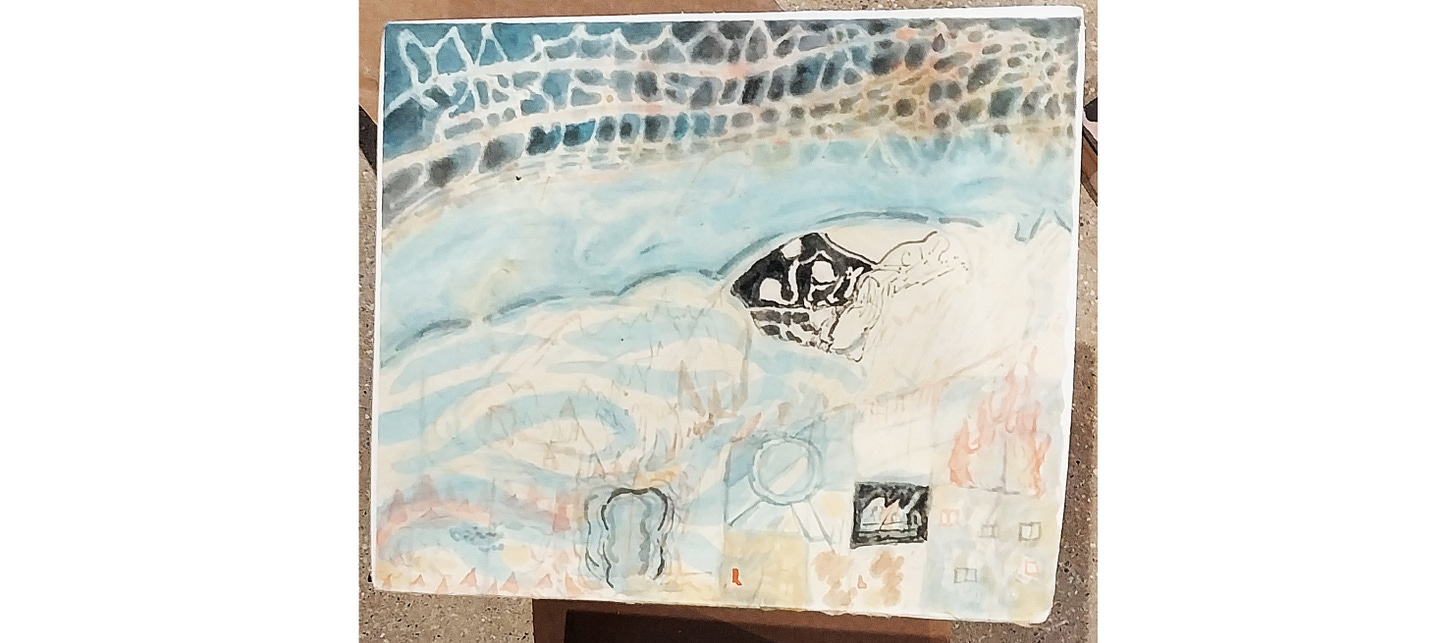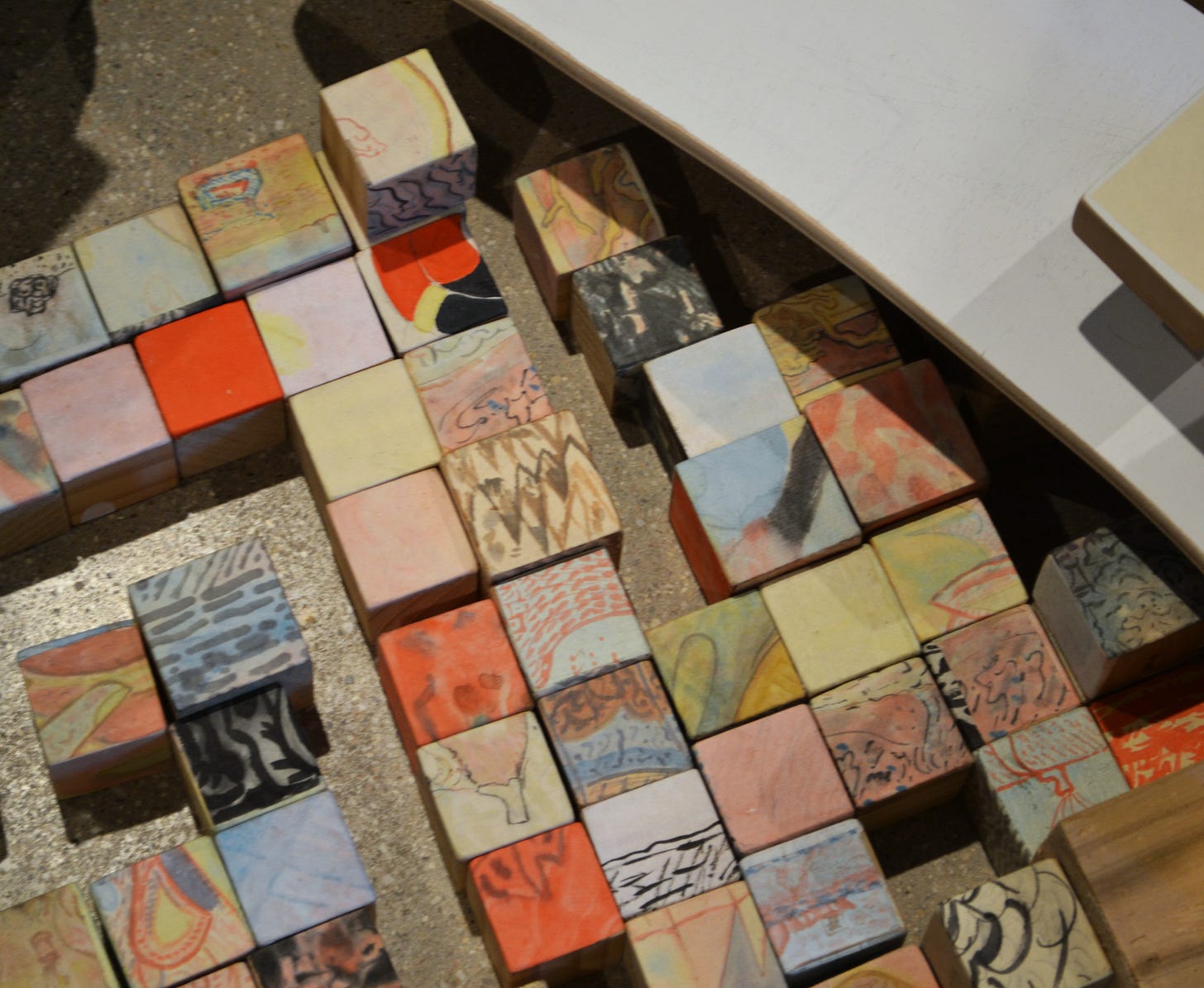There is a moving group exhibit currently on view at the Blaffer Art Museum on the campus of the University of Houston. It is called A Way to Mend and the curator is Doug Welsh. Welsh describes A Way to Mend as “love letter to Forrest Bess” and to the Gulf Coast artists who Welsh identifies as being committed to healing in their work. The artists are all associated with the Gulf Coast to one degree or another. Crasis is an artistic pair from Philadelphia who had been had a residency at the Galveston Artist Residency in 2023-24, so artists’ connection to the region was sometimes a little tenuous.
Bess had serious mental illness and spent a large section of his life as a solitary fisherman in a remote cabin in East Matagora Bay on the Texas coast. His cabin was destroyed in 1961 by Hurricane Carla, the most intense hurricane to strike Texas in the 20th century. A lot of the appeal of Forrest Bess’s story is the ever popular tortured artist effect (to quote Todd Rundgren). I became aware of Bess in a memorable article written in 1982 by Michael Ennis in Texas Monthly. The story of a wild artist facing Carla alone in an isolated marsh was how he caught my attention initially. But I came to feel pity and compassion.
Welsh arranged a loan of Bodies of Dead Children from the Menil, which has five Bess paintings in its collection. I like that Welsh linked all these Gulf Coast artists and writers to Bess, a historic Gulf Coast artist. It hints at an artistic continuity, which bolsters the thesis that there is a distinctive flavor to art of this region that I infer from the exhibit. (I invented the idea that this exhibit is meant to characterize the artistic tendencies of the Gulf Coast. Welsh said that he “didn't set out to define the scene or the region” like Fresh Paint did in 1985.)
One of the pieces in the show is a floor installation by Eric Schnell, an artist who is also the director of the Galveston Artist Residency. Schnell has a connection to Forrest Bess—me. When I engaged in a series of “expeditions” to try to attempt to find the location of Bess’s legendary bait shack, Schnell accompanied me to East Matagorda. We never found a trace of Bess’s cabin, but I think we have figured out where it was. The piece he has in the show is called The day expanding poem. (a story from The Island of the Umbellifers). As soon as I read that title, I remembered seeing the word “umbellifers” at the Galveston Art Center in 2022. There had been a big group exhibit called Along Those Lines featuring several artworks by Schnell. The day expanding poem is a direct descendant of his work from the earlier exhibit.

The 2022 installation consisted of several watercolors and a sculpture that was composed mostly of little wooden cubes, about 1.75 inches on a side, painted in faint watercolors and pen and ink, along with rough hewn planks that serve as platforms and some larger cubes. The sculpture represented the cruise ships that loom over the Strand in downtown Galveston.
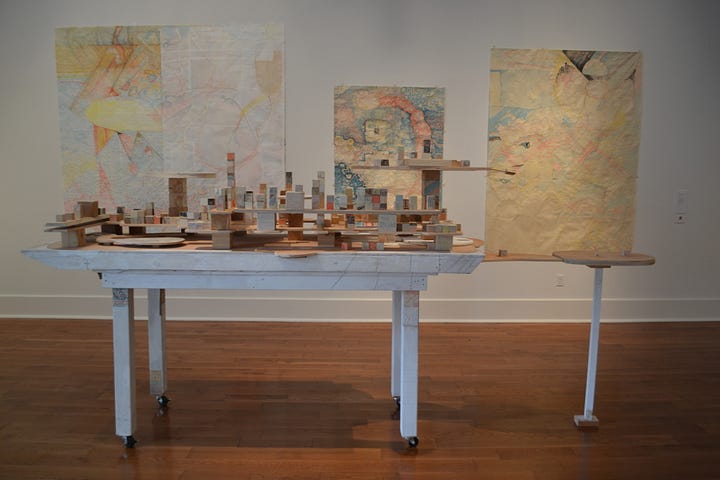
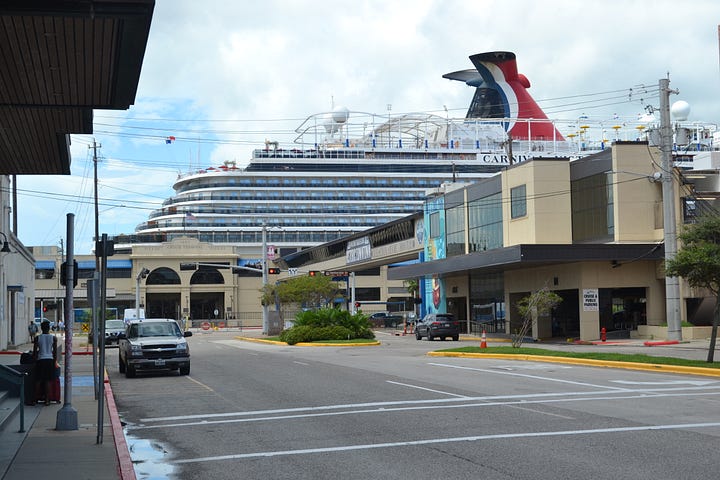
I remember liking the ad hoc nature of Study for a Cruise Ship. Building a city-like structure on a table top is something that anyone who grew up with Lego might feel a nostalgia for.
Last year, Schnell took his blocks to The Old Jail Art Center in Albany, Texas, for The Island of The Umbellifers (Part II). He constructed an installation there out of blocks (which may be reused from Study for a Cruise Ship—they look similar, and Schnell told me that he likes the cubes because they are “never placed in the exact same way installed in the gallery as they would be in my studio.”) The installation at the Old Jail Art Center was spread out over three rooms, and Schnell wanted to condense the work into something that could be seen all at once, which he has done with The day expanding poem.
When I first saw the work from 2018, I misread the informational label as “The Island of the Unbelievers” which sounds like a location from an allegorical fantasy novel. But the word “umbellifer” is unrelated to “unbeliever.” Umbellifers are a class of plants like carrots, cumin, dill, fennel, and parsley. Schnell became interested in this family of aromatic plants when he moved to Galveston and attempted to raise them. These plants apparently attract beneficial insects, and this mutually beneficial relationship the umbellifers have with other species inspired Schnell to imagine Galveston as a locus for such a cooperative way of life.
As an allegorical place, the Island of Umbellifers has its own history and culture. Embedded into this piece is a poem accompanied by small watercolors. The watercolors have vaguely recognizable images on some of the panels, but they don’t strive for realism. They seem closer to doodles than polished works. The Day Expanding Poem is laid out in 10 lines, each accompanying a small watercolor.
Build the Day Expanding Poem
Walk past the shipyards
The country south of here
The Shipbuilding Sea
A first glimpse of the Island
Traveling with friends
Crawl this new planet
The Screen under the earth
A platform for Holding On
It came from the dunes, but it was not us, it was not a Lettered Olive Snail, it was not a Speckled King Snake
(There is a watercolor that goes between “Crawl this new planet” and “The Screen under the earth”, but I failed to take a usable photo of it. You’ll have to physically go to the Blaffer to see the missing image. A Way to Mend is on view through September 27.)
As a scholar of comics, I place a high value on sequences of illustrations paired with bits of narrative. And like a comic strip, The Day Expanding Poem is a narrative. The piece is arranged in a backward “S” shape, like a speckled king snake guarding its nest. The speckled king snake is native to Galveston. Among its prey are rattlesnakes—the speckled king snake is immune to its venom. The lettered olive snail is also a predator. I am amused by the idea of a snail pouncing on its prey.
There are shipyards in Galveston, mostly on the northern fringe of the island or on Pelican Island, a small island devoted to industrial use just north of Galveston. I guess it is possible to walk past the Pelican Island dry docks, but they aren’t on the way anywhere. I picture Schnell and his walking partner, perhaps the book-reading critter in the first painting above, walking down Harborside drive past the ship yards into town.
In A Way to Mend, curator Doug Welsh divides his artists into several areas of focus; psychology, identity, memory, the envoronment, politics, philosphy, and spirituality. He places The Day Expanding Poem in the philosophy group. That feels right because The Island of Umbellifers as a project feels like an examination of how to live a cooperative life. I mentioned that my misreading of the title made me think of an allegorical fantasy novel, but the poem is description of a quest to reach an allegorical island paradise. So seeing The Island of Umbellifers as an artistic Fellowship of the Ring is not completely wrong.
Furthermore, I am of the opinion that Trump must go.
[Please consider supporting this publication by becoming a patron, and you can also support it by patronizing our online store. And one more way to support this work is to buy books through The Great God Pan is Dead’s bookstore. ]

